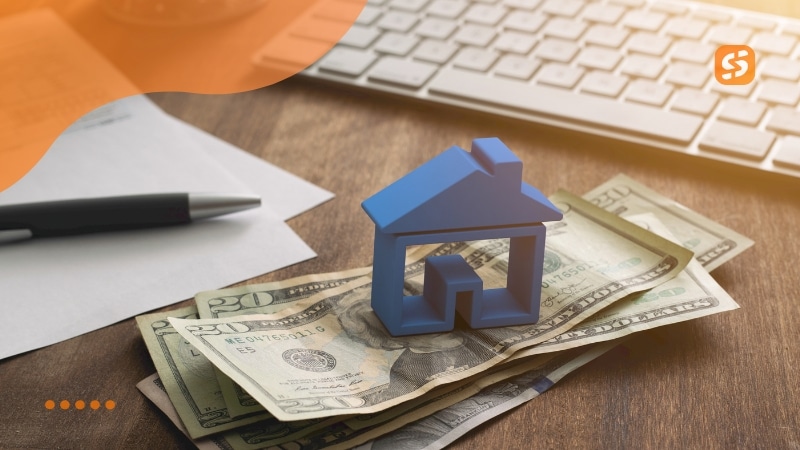Anúncios
Do you want to find better mortgage alternatives, but have no idea how to refinance home loan?
Today, you will understand exactly what real estate refinancing is, in addition to understanding how it works and the step-by-step process to be able to do yours in a simple way.
In addition, you will see tips on how to choose the best real estate refinancing. That way, you will be able to make a good deal. Keep reading to understand everything about how to refinance home loan.
What is a mortgage refinance?

Real estate refinancing is a way to replace your current loan with another with more advantageous conditions.
This is quite common and can be a way to reduce your interest rate, reducing the value of the installments.
Anúncios
Generally, the most common goals of those who want to refinance are:
- Reduce the value of monthly installments;
- Pay off financing faster;
- Change the credit rate from variable to fixed;
- Failing to pay FHA mortgage insurance;
Therefore, refinancing is a good alternative, but to really be beneficial, you need to pay attention to the costs and fees involved, as well as a careful assessment of your current financial situation.
Ahead, let’s explore how the refinancing process works, from the credit analysis to the signing of the new contract. Keep reading.
How does refinancing work?
At first, real estate refinancing is similar to the process of taking out a mortgage loan, but instead of using the loan to buy a house, you use it to change some conditions of your current credit.
This means that when you refinance, you get a new mortgage to pay off the outstanding balance of your original loan, and from there, you will start paying the lender according to the conditions of the new financing.
When to refinance the property?
The most common time to refinance is when interest rates are lower than when you bought your home.
In this scenario, refinancing is a way to save money, as a lower interest rate leads to a lower rate to be paid at the end of the month.
However, if you’re considering refinancing for another reason, for example, to stop paying the mortgage fee, you’ll need to do the math to understand if it’s really worth it.
Generally, if rates have gone up, it may not be worth the refinancing. Thus, sticking with the original mortgage may be the best option, as a refinance with higher rates will see you pay a higher amount.
While it doesn’t control interest rates, it can give you a sense by tracking your credit score, one of the most important metrics in choosing credit.
As a rule, it works like this: if your credit score has improved since you bought your home, you may be able to get better terms in the market. Now, if it has worsened, the chances of advantageous conditions are low.
Refinancing a mortgage, step by step (how to refinance home loan)

Now that you understand what it is, how it works and when to refinance. You can decide if it really pays to refinance, in your case. Let’s now see the step-by-step guide to getting a good deal:
- Define your goal: First and foremost, set a goal.
- Want to reduce monthly payments?
- Shorten the loan term?
- Get Rid of Mortgage Insurance?
- The answer to these questions will help you understand if refinancing is the right option for you and which type of product is best suited to meet your needs.
- Research the best mortgage refinance rate: Request quotes from three to five banks to compare the rates offered. Some options that stand out are Yellow Brick Road, Coom Bank, among others;
- Choose a lender: Once you have received the proposals, compare all the fees and the amount of the installment. Try to check the total cost of refinancing. We also recommend that you choose those with a fixed rate, that is, those that do not change according to market fluctuations.
- Close the loan: The closing of the loan is the time when you will pay the closing costs, as outlined in the estimate of the loan you will receive in the proposal. After signing the contracts. The balance of your previous loan will be paid off, and you will begin repaying the new loan as per the agreed conditions.
Following these steps, real estate refinancing is done in a simple and efficient way and the best part is that you don’t like a lot of time to do it. Since everything can be done from your home, over the internet.
Conclusion (how to refinance home loan)
Now that you’ve gained valuable insights into how to refinance a home loan, it becomes clear that this financial strategy can offer significant benefits when applied thoughtfully. Whether your objective is to reduce your monthly mortgage payments, shorten the overall duration of your loan, or eliminate private mortgage insurance, refinancing presents a practical opportunity to align your mortgage with your current financial goals. It can also provide relief during times of economic uncertainty or rising interest rates, making your home loan more manageable in the long term.
The success of your refinancing journey largely depends on having a clear understanding of your personal financial objectives. Are you aiming to increase monthly cash flow, pay off your home sooner, or simply get a better interest rate? Once you’ve defined your priorities, the next step is to compare loan offers from multiple lenders. Each lender may offer different terms, fees, and interest rates, so evaluating them side by side will help you identify the most advantageous option tailored to your needs.
By carefully following the refinancing process, gathering documentation, checking your credit score, evaluating costs, and submitting your application. You’ll be well-prepared to renegotiate your mortgage under better terms. In the end, refinancing isn’t just about securing a lower rate; it’s about improving your financial health and gaining greater control over your future. With the right approach, refinancing can lead to meaningful savings and a more stable, confident financial outlook.



















